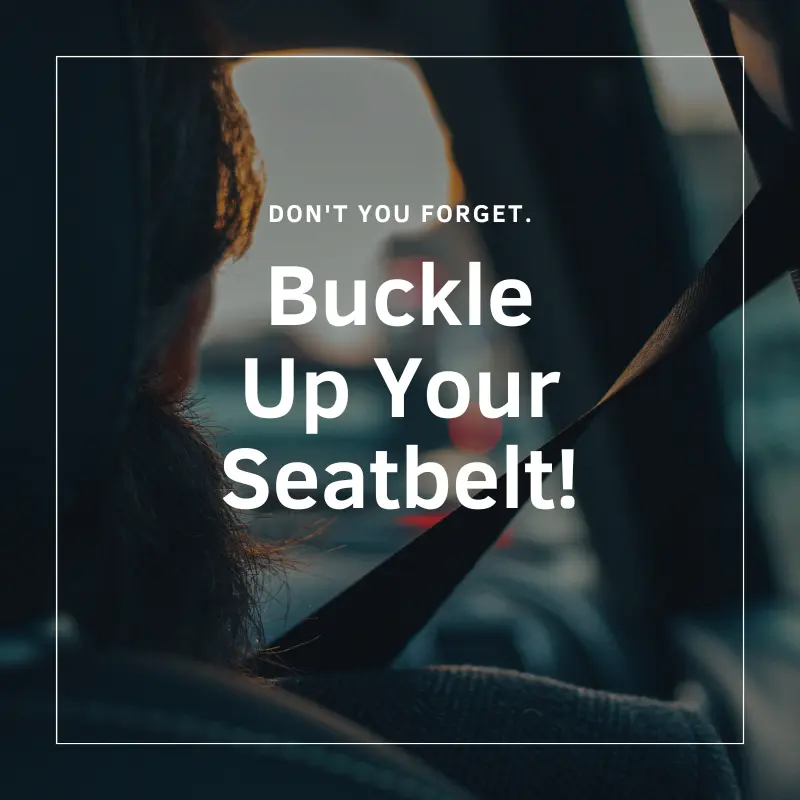In the realm of road safety, few actions are as fundamental and potentially life-saving as fastening your seatbelt. The simple act of securing this small but critical piece of safety equipment significantly reduces the risk of injury or death in the event of a collision. This article explores the history and evolution of seatbelts, the mechanics of how they work, the legal implications of not wearing one, and the numerous benefits they offer to drivers and passengers alike.
The Evolution of Seatbelts
- Origins and Early Concepts: Seatbelts have come a long way since their inception. The first patents for seatbelt-like devices date back to the early 20th century, but it wasn’t until the 1950s that lap belts became a standard feature in some vehicles. These early seatbelts were rudimentary, offering limited protection compared to modern systems.
- Three-Point Seatbelt Innovation: The breakthrough in their design came with the introduction of the three-point seatbelt by Nils Bohlin, a Swedish engineer working for Volvo. In 1959, Volvo became the first car manufacturer to equip its vehicles with this innovative safety feature. The three-point seatbelt, with its diagonal strap across the chest and a lap belt, quickly became the standard in automotive safety.
How it Works
- Webbing and Retractors: Modern systems consist of a webbing material that extends across the lap and chest of the occupant. This webbing is connected to a retractor mechanism, which allows the belt to adjust to the occupant’s movements while maintaining tension during a sudden stop or collision.
- Pre-tensioners and Load Limiters: Some systems are equipped with pre-tensioners, which automatically tighten the seatbelt in the event of a collision, minimizing slack and reducing forward movement. Additionally, load limiters may be present to allow controlled and gradual release of seatbelt webbing to prevent excessive force on the occupant.
- Locking Mechanisms: The locking mechanisms ensure that the belt stays securely fastened during an impact. There are emergency locking retractors that activate during sudden deceleration, as well as automatic locking retractors that engage when the belt is pulled out fully.
- Role in Crash Dynamics: They are integral to the principles of crash dynamics. In the event of a collision, they restrains the occupant, preventing them from colliding with the vehicle’s interior or being ejected from the vehicle. This significantly reduces the risk of serious injury.

Legal Implications of Seatbelt Use
- Mandatory Laws: Recognizing the life-saving potential of seatbelts, many countries and regions have implemented mandatory seatbelt laws. These laws require all vehicle occupants to wear seatbelts while the vehicle is in motion. Non-compliance often results in fines and penalties.
- Primary vs. Secondary Enforcement: The laws can be categorized into primary and secondary enforcement. In primary enforcement states, law enforcement can stop and ticket a driver solely for not wearing it. In secondary enforcement states, it’s violation can only be enforced if the driver is stopped for another offense.
- Impact on Insurance and Liability: In the event of a collision, insurance companies may consider its use when determining liability and settling claims. Failure to wear it could be viewed as negligence, potentially affecting compensation for injuries sustained in the accident.
The Benefits of its Use
- Reduction in Injury Severity: The primary benefit of wearing a seatbelt is a significant reduction in the severity of injuries during a collision. Seatbelts distribute the force of a crash across the strongest parts of the body, minimizing the risk of head, chest, and abdominal injuries.
- Prevention of Ejection: They play a crucial role in preventing occupants from being ejected from the vehicle during a collision. Ejection is a leading cause of fatal injuries in car accidents, and seatbelt use acts as a powerful deterrent against this perilous outcome.
- Enhanced Effectiveness of Airbags: Airbags complement seatbelt systems by providing additional protection during a collision. However, airbags are most effective when used in conjunction with seatbelts, as the combination of both systems significantly improves occupant safety.
- Protection in Various Types of Collisions: They offer protection in a wide range of collision scenarios, including frontal, side-impact, and rollover accidents. Their versatility makes them a fundamental safety feature for all occupants in a vehicle.
- Minimization of Secondary Collisions: In the chaos of a collision, unrestrained occupants can become projectiles within the vehicle, causing secondary collisions with the vehicle’s interior or other occupants. Seatbelt use minimizes this risk, contributing to overall safety.
Overcoming Common Excuses for Not Wearing Seatbelts
- Myth: Seatbelts Are Uncomfortable: The discomfort associated with them is often a matter of adjustment. Properly adjusting them and becoming accustomed to wearing them can alleviate discomfort. Additionally, advancements in seatbelt design aim to enhance comfort without compromising safety.
- Myth: I’m Only Driving a Short Distance: Regardless of the distance traveled, accidents can occur at any time. The majority of accidents happen close to home, making it crucial to wear them regardless of the distance of the trip.
- Myth: I’m a Skilled Driver and Won’t Get into an Accident: Even skilled and cautious drivers can fall victim to the actions of others on the road. Accidents are often caused by external factors, making there use a necessity for all drivers and passengers.
- Myth: Airbags Alone Are Sufficient: While airbags provide crucial protection, they are designed to work in conjunction with belts. Airbags alone cannot prevent occupants from colliding with the vehicle’s interior or being ejected, highlighting the importance of wearing the vehicle’s belts.
Cultivating a Culture of Seatbelt Safety
- Educational Campaigns: Government agencies, non-profit organizations, and automakers frequently engage in educational campaigns to raise awareness about the importance of seatbelt use. These campaigns aim to dispel myths, educate the public on the benefits of its use, and promote responsible driving habits.
- Incorporating Use in Driver Education: Driver education programs play a crucial role in instilling safe driving habits. Integrating comprehensive education on the importance of seatbelt use into driver training programs can positively influence the behavior of new drivers.
- Leading by Example: Parents, guardians, and caregivers serve as influential role models for young passengers. Demonstrating consistent belt use sends a powerful message about responsible behavior and instills a lifelong habit of prioritizing safety.

Conclusion
In the tapestry of road safety measures, fastening these belts emerges as a critical thread. The evolution of there technology, coupled with a deep understanding of its mechanics and the legal and practical implications of use, underscores its indispensable role in preventing injuries and saving lives. By embracing the habit of fastening our seatbelts and promoting a culture of safety, we contribute to a safer and more secure environment on our roads. Fasten your vehicle belts—a simple action that stands as a powerful commitment to personal safety and the well-being of those who share the journey.
